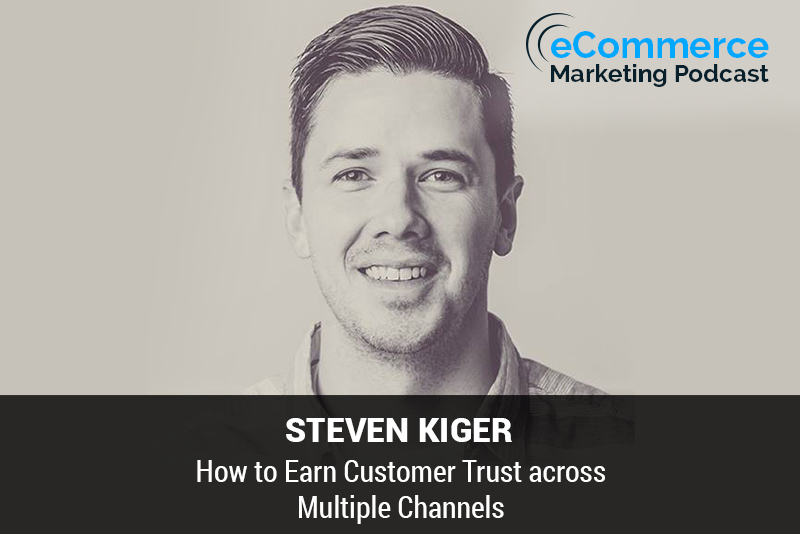
The eCommerce Marketing Podcast walks you through everything that goes into ecommerce marketing — from inbound marketing to paid advertising to conversions. Learn the strategies top marketing experts use to grow their businesses.
Marketing Strategies Revealed in this Episode:
- Why establishing customer trust so important these days
- Methods for gaining trust from your customers and potential customers
- How to get customers to trust influencers or affiliates who promote your brand
- Ways to get affiliates and influencers to adhere to your promotional and brand guidelines
- The best ways to highlight your expertise without coming off as too salesy

Episode Title: Building Customer Trust Through Authentic Influencer Marketing
Guest: Steven Kiger, Co-Founder of Platstack
In this episode of the eCommerce Marketing Podcast, Arlen Robinson speaks with Steven Kiger, the co-founder of Platstack, a digital declutterer that helps organize links from various sources in one convenient place. Steven discusses the importance of building customer trust in the cluttered online marketplace and how brands can use authenticity and cohesive messaging to gain and maintain that trust. He also delves into the role of influencers and affiliates in promoting brands and shares strategies for ensuring they align with the brand’s guidelines and authenticity.
Key Takeaways:
- Introduction to Steven Kiger and Platstack (00:00:50):
- Steven’s background in graphic design and digital marketing.
- Creation and purpose of Platstack as a tool for organizing links from multiple sources.
- Importance of Customer Trust (00:05:20):
- Modern consumers are savvy and have tools to authenticate brands.
- Trust is crucial as consumers become more wary of unknown brands.
- Creating Authentic Customer Experiences (00:07:30):
- Examples of Netflix and Amazon setting high standards for customer experiences.
- Importance of telling the brand’s story and the “why” behind the business.
- Role of Influencers and Affiliates (00:14:00):
- Authenticity in influencer marketing is key to gaining trust.
- Brands should find influencers who genuinely use and love their products.
- Ensuring Cohesive Brand Messaging (00:18:50):
- Providing clear guidelines and examples to influencers.
- Authentic voices naturally promote products better than paid endorsements.
- Effective Inbound Marketing Strategies (00:25:00):
- Providing value and education to customers beyond just selling products.
- Use of curated content to engage and inform customers about relevant topics.
- Post-Purchase Engagement (00:30:50):
- Importance of continuing communication after the sale to build loyalty.
- Gathering feedback and addressing issues to turn customers into brand advocates.
Guest Information:
- Name: Steven Kiger
- Position: Co-Founder of Platstack
- Contact:
- LinkedIn: Steven Kiger
- Website: Platstack











